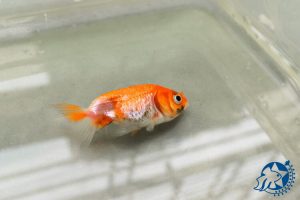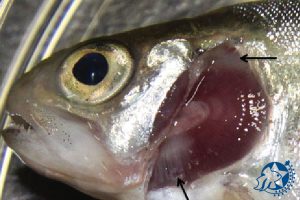Common Diseases in Aquarium Fish and Their Treatments
Keeping aquarium fish seems simple on the surface, but the slightest disturbance in environmental conditions can endanger the health of aquatic animals. Many diseases appear imperceptibly and, if not diagnosed in time, can lead to the death of the fish. In this article, we will examine the most common diseases of aquarium fish, warning signs, and effective treatment methods.
The Importance of Early Detection in Fish Diseases
Fish are delicate and sensitive creatures, and in closed environments such as aquariums, any small change in water conditions, temperature, or oxygen can stress them out. These stresses are the basis for many diseases. Early detection of disease symptoms in their early stages is the key to preventing their progression and maintaining a healthy aquarium ecosystem.
Some warning signs include lethargy, loss of appetite, white or red spots on the body, discoloration of the gills, and abnormal swimming. If you notice these symptoms, it is best to immediately check the water condition and the fish’s diet.
Ammonia Poisoning: The Silent Killer in the Aquarium
Ammonia is one of the most important threats to fish health. It is produced naturally as a result of the decomposition of waste, food remains and dead plants. Although ammonia is not considered a disease, in high quantities it can lead to the rapid death of fish.
To prevent ammonia poisoning, you should use quality biological filters and nitrifying bacteria that convert ammonia into nitrite and then nitrate. It is also necessary to regularly change part of the aquarium water and monitor ammonia levels with test kits.

Anchor Worms: Dangerous and Invasive Parasites
Anchor worms, which are actually a type of parasitic crustacean, often enter the aquarium through infected fish. These parasites penetrate the fish’s tissue and cause painful, inflammatory sores. A large, red sore is usually visible where the worm attaches to the fish’s body.
Treatment includes isolating the infected fish, using salt baths and anti-parasitic medications. Also, careful cleaning of the tank and avoiding purchasing fish from unreliable sources play an important role in prevention.

Bacterial Infections: A Hidden Threat in Unfavorable Conditions
Bacterial infections are another common problem in aquariums, usually occurring after fish skin wounds or poor water quality. Bacteria such as Aeromonas salmonicida can cause internal infections, skin ulcers, swelling, and even bleeding.
Using appropriate antibiotics in the water, improving water quality with better filtration, and maintaining aquarium hygiene are the most important ways to treat and prevent them. It is best to use aquarium-specific medications and adjust their dosage according to the instructions of a specialist.

Brooklynosis: The Hidden Enemy of Saltwater Fish
This disease, which is most common in saltwater fish such as anemonefish, is caused by a ciliated protozoan called Brooklynella hostilis. Infected fish develop increased mucus, rapid breathing, and scaling, and if left untreated, may die.
To treat Brooklynosis, prompt quarantine of infected fish, the use of formalin baths, and strengthening the fish’s immune system with proper nutrition are recommended. Also, following the principles of proper transportation and storage in stores prevents the spread of this disease.

Dropsy: Abdominal swelling and raised scales
Dropsy is best known for its severe swelling of the abdomen and raised scales. It is usually a sign of internal disorders or severe bacterial infections.
It is difficult to treat, but quarantine, medicated foods, and water changes can be effective. Resources like FishLore also offer helpful expert information on early diagnosis and natural treatments.

Tips for Preventing Disease in Your Home Aquarium
Following the following tips can significantly reduce the risk of fish disease:
Using quality filters and regular water changes
Proper feeding and avoiding overfeeding
Quarantine new fish before introducing them to the main aquarium
Constantly monitoring water parameters with the help of tools
Conclusion
If you are looking to properly care for your aquarium fish, you should pay special attention to their health. Prompt diagnosis, timely treatment, and maintaining aquarium hygiene are the most important factors in reducing mortality and increasing the lifespan of your fish. With proper education and the use of reliable sources, many diseases can be prevented and a healthy environment can be created for your aquatic life.


